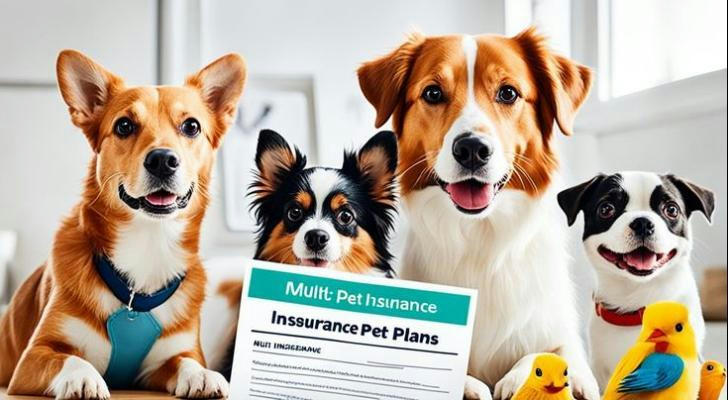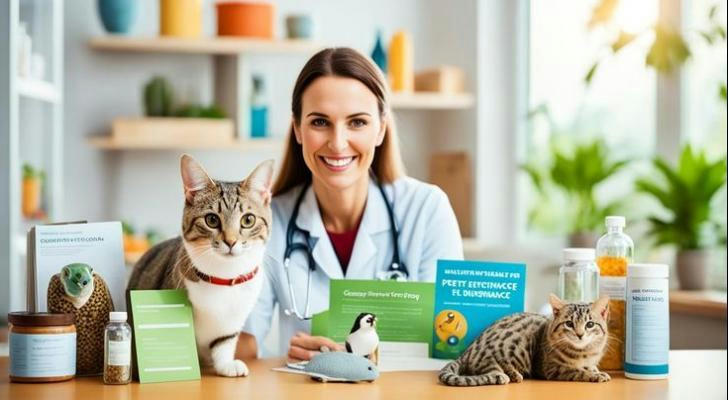Pet Insurance: Because Fido Deserves It Too 🐾
— A Comprehensive Guide to Pet Healthcare Coverage
In the U.S., pets are no longer just “animals”—they're part of the family. According to a 2023 survey by the American Pet Products Association (APPA), over 66% of U.S. households own a pet (APPA, 2023). Dogs and cats not only bring us companionship, but also emotional support and joy. However, with the continuous rise in veterinary costs, a critical question emerges: when your pet falls ill, are you financially prepared? This article offers a thorough overview of pet insurance, helping you better understand how to manage health-related risks for your furry family members—and secure a healthier future for both of you.

1. Why Are Pet Medical Costs So Overwhelming? 💸
Many pet owners don’t realize how expensive veterinary care can be—until it happens. A common case of pancreatitis can cost anywhere from $3,000 to $5,000, and a surgery for a broken bone may exceed $7,000 (North American Pet Health Insurance Association, 2022). Without insurance, these costs are fully borne by the pet owner. Even routine care—like vaccines, blood tests, and flea treatments—can add up over time. In 2023, pet owners in the U.S. spent an average of $1,270 per dog and $950 per cat (APPA, 2023). And as veterinary technology advances, these prices will likely continue to rise.
2. What Is Pet Insurance and How Does It Work? 📋
Pet insurance is essentially health insurance for your pets. It generally includes the following categories:
Accident-Only Coverage: For incidents like fractures, car accidents, or lacerations.
Accident & Illness Coverage: A broader plan that includes cancer, infections, and chronic conditions.
Wellness Plan Add-Ons: Covers preventive care such as vaccines, spay/neuter procedures, and dental cleanings.
Each policy typically includes a deductible, a reimbursement rate, and an annual payout limit.
For example, a plan might offer a $250 deductible, 80% reimbursement, and an annual cap of $10,000.
⚠️ Note: Pet insurance does not cover pre-existing conditions, so the earlier you sign up, the better your coverage will be.

3. Still Undecided? These Real-Life Cases Say It All 🐶
Case 1: Max the Insured Dog
Max, a 2-year-old golden retriever, started vomiting uncontrollably one night. He was rushed to emergency care and diagnosed with gastric torsion. The total cost of surgery and hospitalization reached $6,800. Thankfully, Max’s owner had pet insurance and only paid $1,400 out of pocket; the rest was covered.
Case 2: Luna the Uninsured Cat
Luna, a 1-year-old British Shorthair, suffered from a blocked bladder due to urinary stones. Emergency treatment and surgery totaled around $2,500. With no insurance and a tight budget, her owner had no choice but to opt for euthanasia.
These two stories show how pet insurance can make a difference during critical moments. It’s not just about finances—it could mean the difference between life and death.
4. How to Choose the Right Pet Insurance Plan? ✅
Choosing the right pet insurance is about more than just price. Consider the following:
Age and Health: Young pets are easier and cheaper to insure. Premiums rise with age and health risks.
Breed-Specific Issues: Some breeds, like bulldogs or German shepherds, are prone to genetic conditions and may have higher premiums.
Policy Details: Pay close attention to coverage for chronic conditions, reimbursement speed, waiting periods, deductibles, and exclusions.
Insurer Reputation: Companies like Trupanion, Embrace, and Nationwide are well-regarded in the U.S. market (NAPHIA, 2023).
Also, check whether a plan supports mobile claims or direct vet payments—this can significantly improve the experience for pet owners.

5. Don’t Wait for a Crisis—Start Managing Pet Health Risks Now ⏳
Many pet owners think, “My pet is healthy now—I don’t need insurance.” But the truth is, risks are unpredictable. Waiting until something happens to take action is often too late.
Pet insurance isn’t mandatory—but in today’s world of rising veterinary costs, it’s a smart and proactive choice. Just like we insure our loved ones, protecting our pets is both a heartfelt and practical decision.
Final Thoughts: Fido Deserves Better Care 🏡
Pets give us unconditional love and trust. What we give them in return shouldn’t stop at toys and treats. Pet insurance won’t prevent accidents or illness—but it can be the safety net you didn’t know you needed.
After all, it’s not about “spending more for protection”—it’s about preparing ahead to avoid regret.
